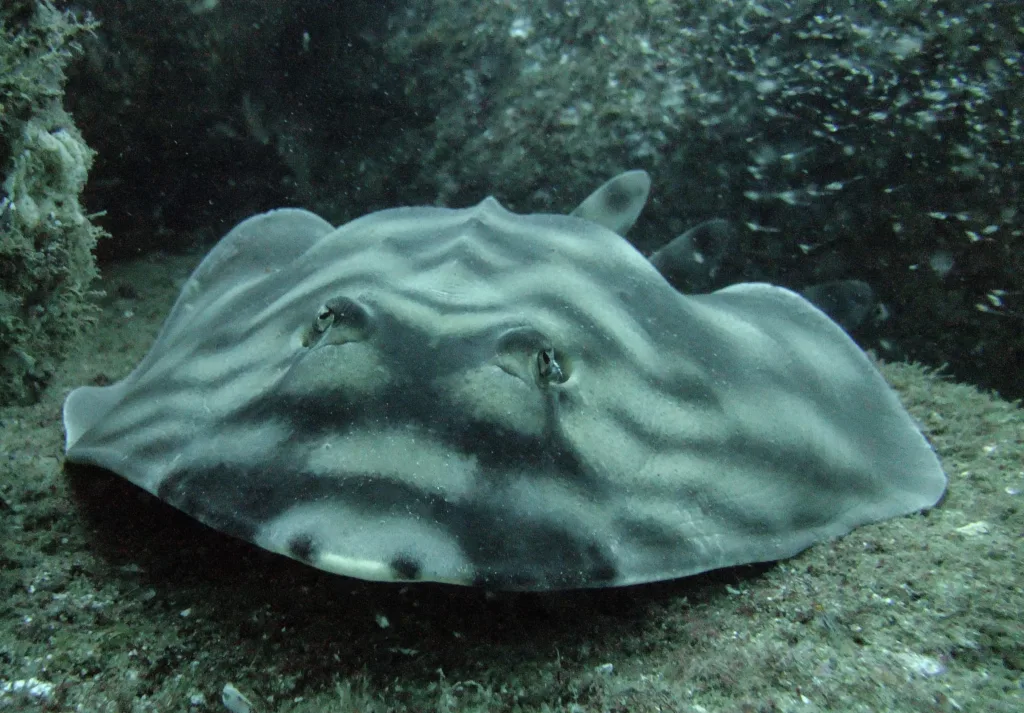What to see Underwater in June

Coming to Cabo during the summer ?
We’ll take you diving or snorkeling with expert guides, top-quality gear, and small groups to ensure a premium experience.
What to see Underwater in June
- Silky sharks in Gordo Banks
As the waters of the Sea of Cortez warm to a comfortable 78-82°F (25-28°C), summer months are mating season for sharks and silky sharks often gather in significant numbers offshore.
Known for their remarkably smooth skin, hence the name “silky,” these curious and inquisitive sharks can grow to 6-9 feet (2-3 meters) and are a sight to behold in the clear, blue depths like Gordo Banks. While not always guaranteed, scuba diving in June in Gordo Banks often reports incredible sightings, sometimes even with dozens of silkies gracefully circling the boat, offering thrilling face-to-face encounters.
- Mobula rays in La Ventana
A truly breathtaking marine spectacle awaits: the annual Mobula Ray aggregation. As the warmer and plankton-rich waters of the Sea of Cortez reach their prime, thousands upon thousands of these graceful “devil rays” congregate, transforming the ocean into a stage for their mesmerizing “flying sea ballet.”
Whether you’re snorkeling, free diving, or simply observing from a boat, you’ll often see these massive schools launching themselves high out of the water, performing synchronized flips and belly flops – a behavior scientists believe may be related to courtship, communication, or even parasite removal.
- Cownose rays in Cabo San Lucas
These distinctive rays, named for their unique cow-like snout, kite-shaped bodies and elegant flapping movements, are often seen in schools during the warmer months, including June. They typically cruise closer to the sandy seafloor, often foraging for crustaceans and mollusks, giving divers a fantastic opportunity to observe their natural behavior.
The Bay of Cabo San Lucas is the perfect topography for those rays as they find sand bottoms, deep walls and sheltered bays.
- Guitar fish in Cabo San Lucas
Blending the features of both sharks and rays, these unique creatures, aptly named for their elongated, guitar-shaped bodies, flattened heads and a distinctive “snout” that helps them forage.
As a diver, you have a good chance of spotting them resting gracefully on the sandy seafloor, hiding below the sand just showing their eyes or subtly gliding along, often in deeper dive sites like Neptune’s Finger or Land’s End.

- Sergeant major nests on the reefs
A closer look at the reefs in June reveals a miniature marvel: the vibrant nests of sergeant major fish eggs. These feisty little damselfish are ubiquitous in Cabo’s shallow and rocky reefs.
Have a look around the reef and find the male sergeant major, often sporting a darker, bluish hue, taking care of a purplish or reddish patch that represents the cleaned and guarded nest of thousands of its tiny eggs! Sergeant majors diligently guard these precious eggs, fanning them with their fins to ensure good water flow and fiercely chasing away any potential predators.
- Green Sea Turtles in the Sea of Cortez
June marks the official start of sea turtle nesting season in the Sea of Cortez and the Pacific ocean! As the ocean waters warm, female sea turtles, primarily Olive Ridleys, begin their ancient pilgrimage back to the very beaches where they hatched, ready to lay the next generation of these magnificent creatures.
While you might not see the actual egg-laying process, which typically happens under the cover of night, divers and snorkelers have a chance of spotting these majestic sea turtles gracefully gliding through the water.